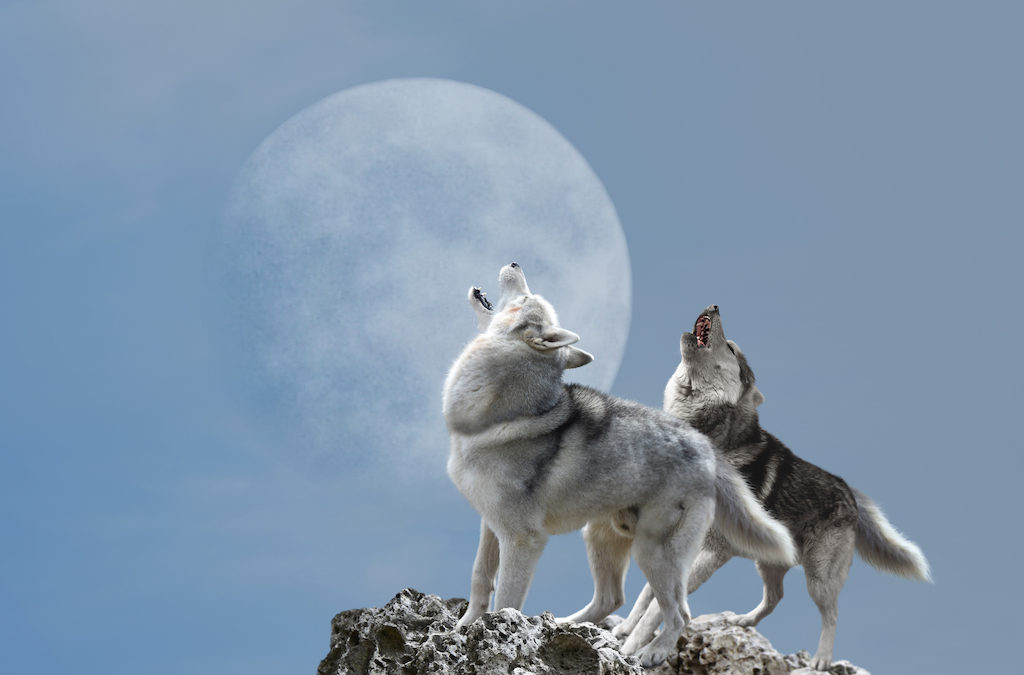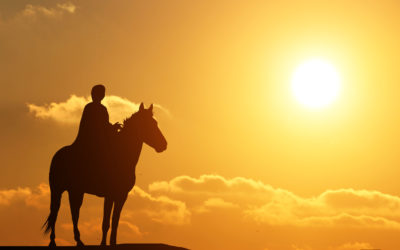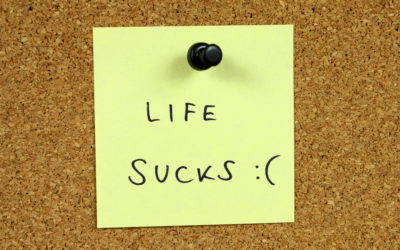There is an old teaching story I’ve always loved about a Cherokee elder who is teaching his grandson about life…
“A fight is going on inside me,” he said to the boy. “It is a terrible fight between two wolves. One is evil – he is anger, envy, sorrow, regret, greed, arrogance, self-pity, guilt, resentment, inferiority, deception, false pride, superiority, and ego.
“The other is good – he is joy, peace, love, hope, serenity, humility, kindness, benevolence, empathy, generosity truth, compassion, and faith.
“This same fight is going on inside you, and inside every other person too.”
The boy thought about it for a minute and then asked his grandfather, “Which wolf will win?”
The old Cherokee simply replied, “The one you feed.”
For years I interpreted this story to be about positive thinking – that if we focus on the positive in life, we’ll enjoy our life far more than if we become consumed by negativity. Therefore, we needed to choose positive thoughts over negative ones as often as possible.
Then, when I began to go deeper into the inside-out understanding and saw how little control we actually have over the content of our thinking, I dismissed the story as a cool metaphor for an outdated model of how the mind actually works.
More recently, I’ve begun to re-contemplate the story as being about two completely different wolves than I had originally imagined…
What if the first wolf in the story was the ego, and the second wolf was the true self?
In order to make sense of that, let me take a few moments to define ego and true self in this context. The Scottish mystic Syd Banks described ego as an image of self-importance.
He went on to say:
“Ego creates self-importance and is strictly related to the personal self and the personal intellect. The ego creates duality and separates us from the great divine oneness and the wisdom that we seek.”
While it’s common to describe the true self with terms like soul, pure awareness/consciousness, divine intelligence, or even “the God within”, I prefer to think of it as whatever it is that is still present when we step out of the noise in our head and find ourselves resting in the stillness and silence before our personal thinking. In other words, I don’t know exactly what it is, but it’s pretty easy to see what it isn’t.
How do you feed “the wolf” of the true self?
Here are two things I’ve seen about this which seem to be helpful…
1. Stop feeding the ego
My friend Mara Gleason Olsen told me that one of the insights which freed her up to launch the One Solution Global Initiative with her husband Eirik was when she realized that what was holding her back was that she didn’t want to be seen as thinking she thought she was smart enough to solve the world’s problems when other people have been struggling with them for 5000 years or so.
“I realized that was just ego”, she told me, “wanting to control the way I was seen and thought about by myself and others.”
And that suggests a very simple way of thinking about what constitutes “ego food”:
If I’m more concerned about how something comes across than I am about the thing itself, that’s probably ego.Click To TweetIn other words, feeding our image (the imaginary way we see ourselves or the way we imagine others see us) is feeding the “wolf” of the ego.
2. Rest in peace
In The Space Within, I wrote:
For many years I’ve signed my emails with the word ‘love’ in the final line where ‘sincerely’ often goes. This was originally a conscious experiment and it has provoked the occasional upset (and in one instance downright hostile) comment from people who feel that love is a somewhat limited commodity which should only be used sparingly lest we use it up and don’t have any left for when it really matters.
What I discovered was, perhaps unsurprising, that love was one of those renewable resources where the more you give, the more you have to give, and these days I don’t give it a second thought. Yet when someone signed off on a recent email to me with the words ‘Rest in peace,’ I found myself being the one getting upset. Was this a veiled threat? Did they have some insight into my state of health and this was their not so subtle way of letting me know?
When my thinking settled, I realized the phrase ‘rest in peace’ reflected a rather beautiful sentiment and that but for its funereal implications, it was something I would wish for any human being. It also occurred to me that only in an outside-in world, where it appears that our feelings are at the mercy of our circumstances, would it occur to us that we might have to wait until we were dead to ‘rest in peace.’
What if we can rest in peace while being fully alive?Click To TweetThe nature of the human experience is that we live in the feeling of our thinking, not the feeling of the world. And peace is our natural state – the space we are born into and seem to notice most often in those moments when we can feel our way beyond the edges of our thinking. So our ability to rest in peace is not a function of how busy our life is or how challenging our circumstances are, it’s simply a matter of how often we are willing to pause in the midst of a busy mind and return to the beauty of the present moment.
When we allow ourselves to rest in the peace of our true nature, we are not actually “feeding the wolf”. It’s not really possible to strengthen that which is the source of our strength. But every moment we spend in the quiet and stillness of that deepest part of ourselves strengthens our faith that all we are is all we need.
And to finish with one last quote from Syd Banks:
“A mind full of love and good feelings can never go wrong.”
With all my love,![]()





